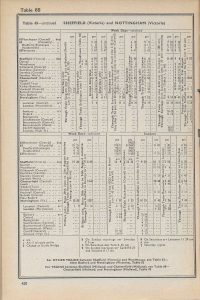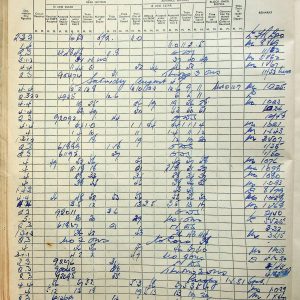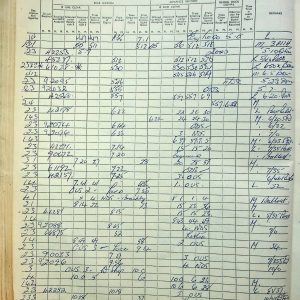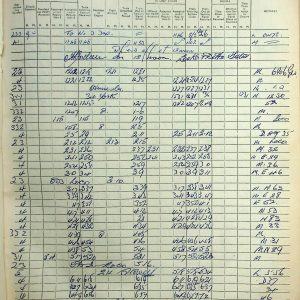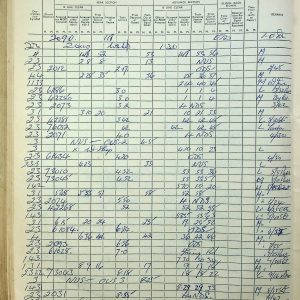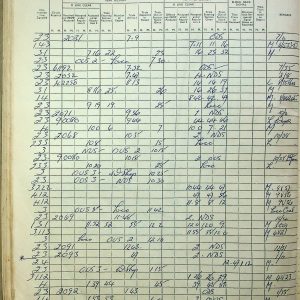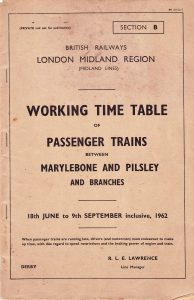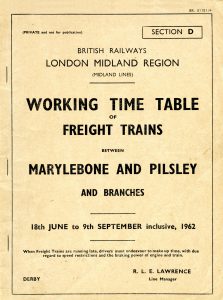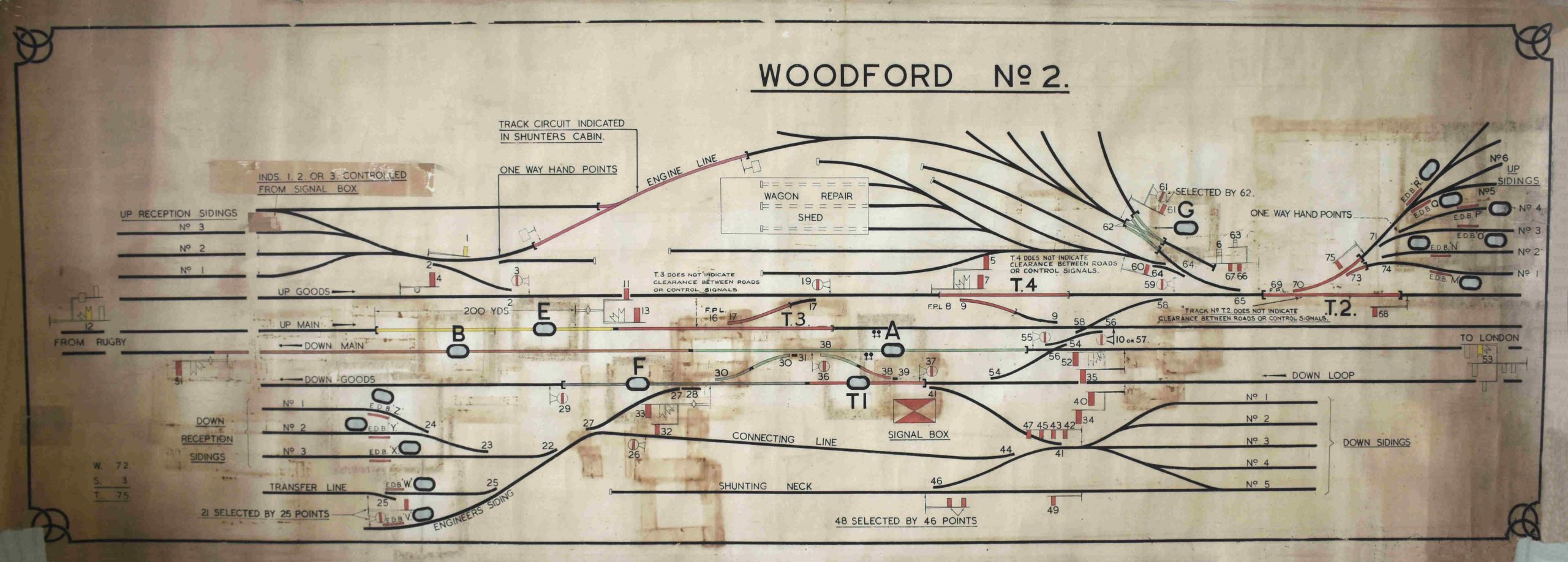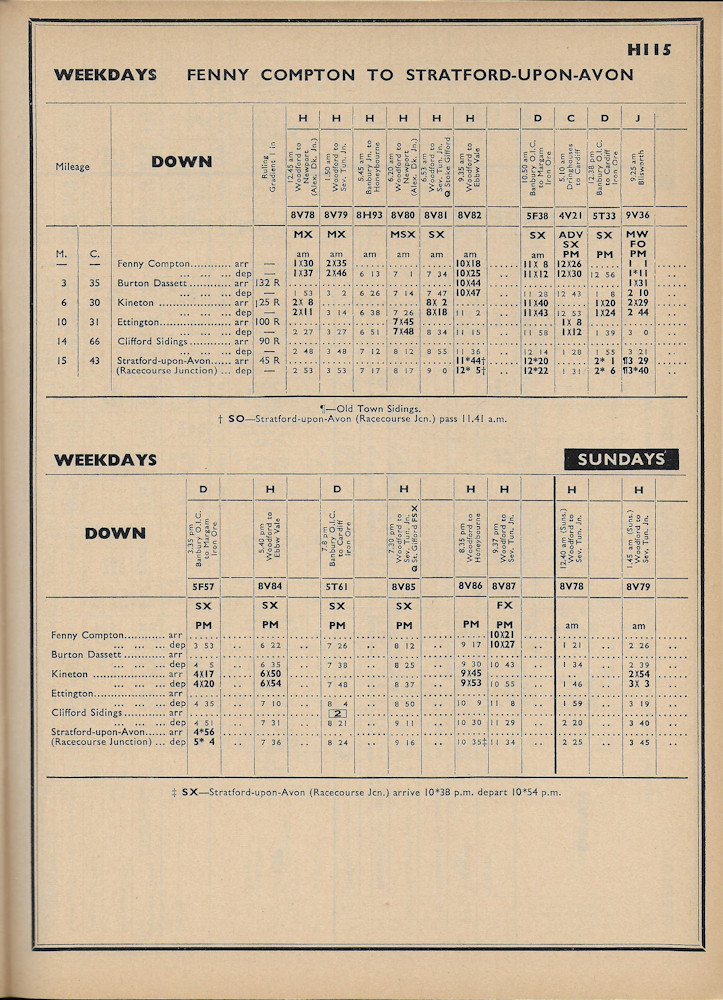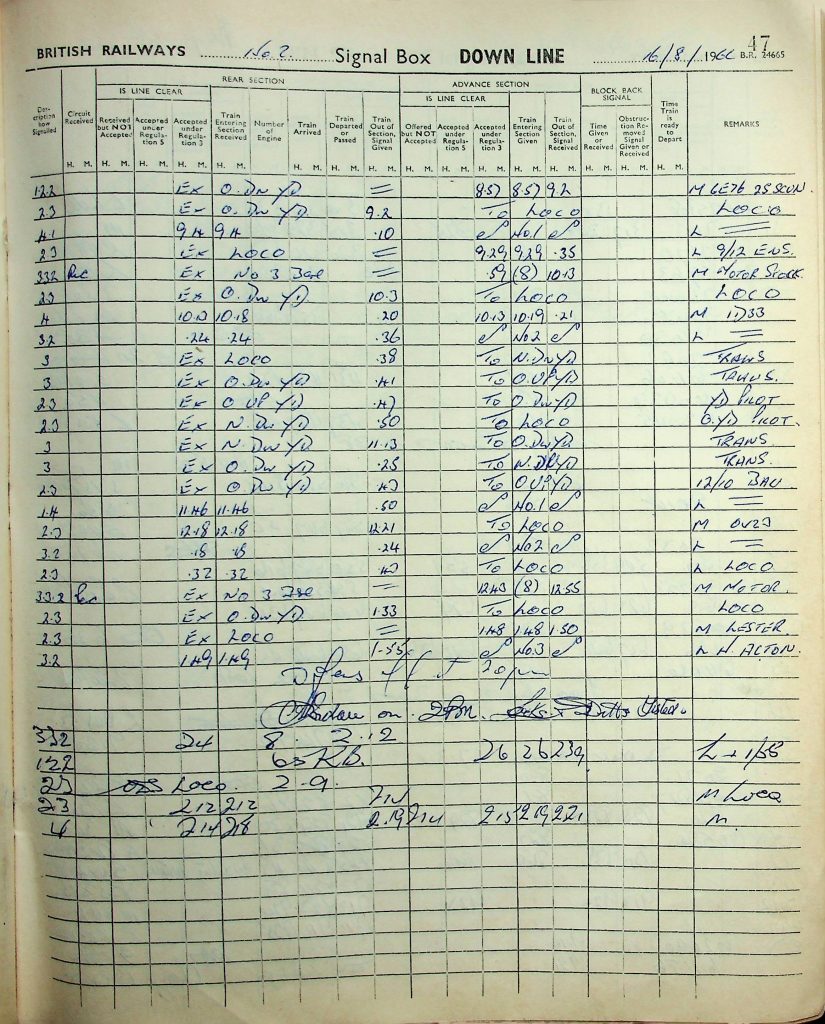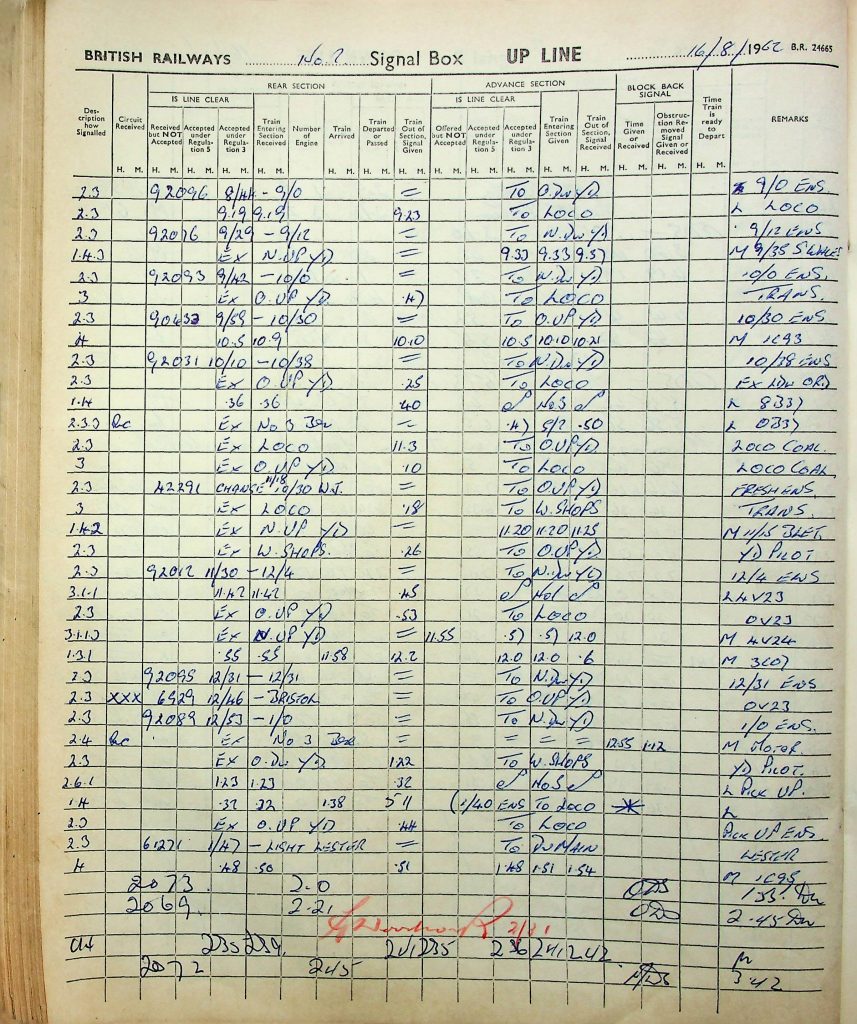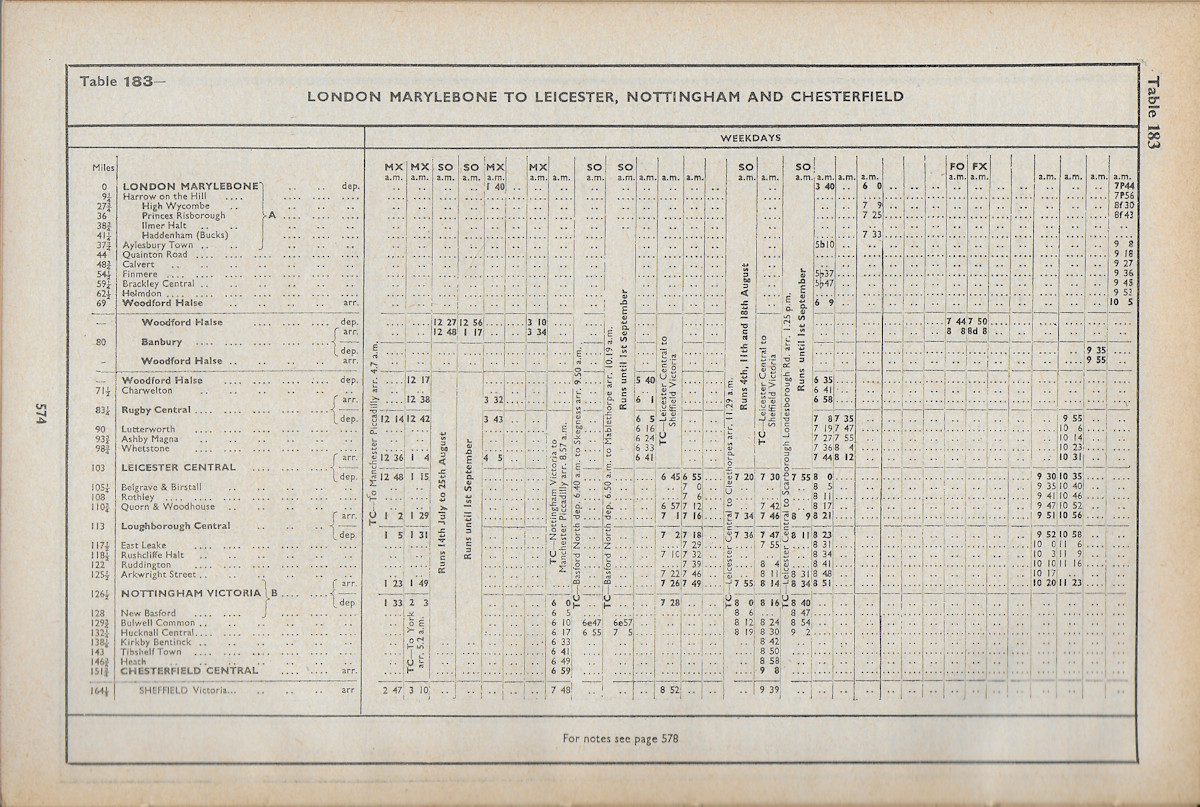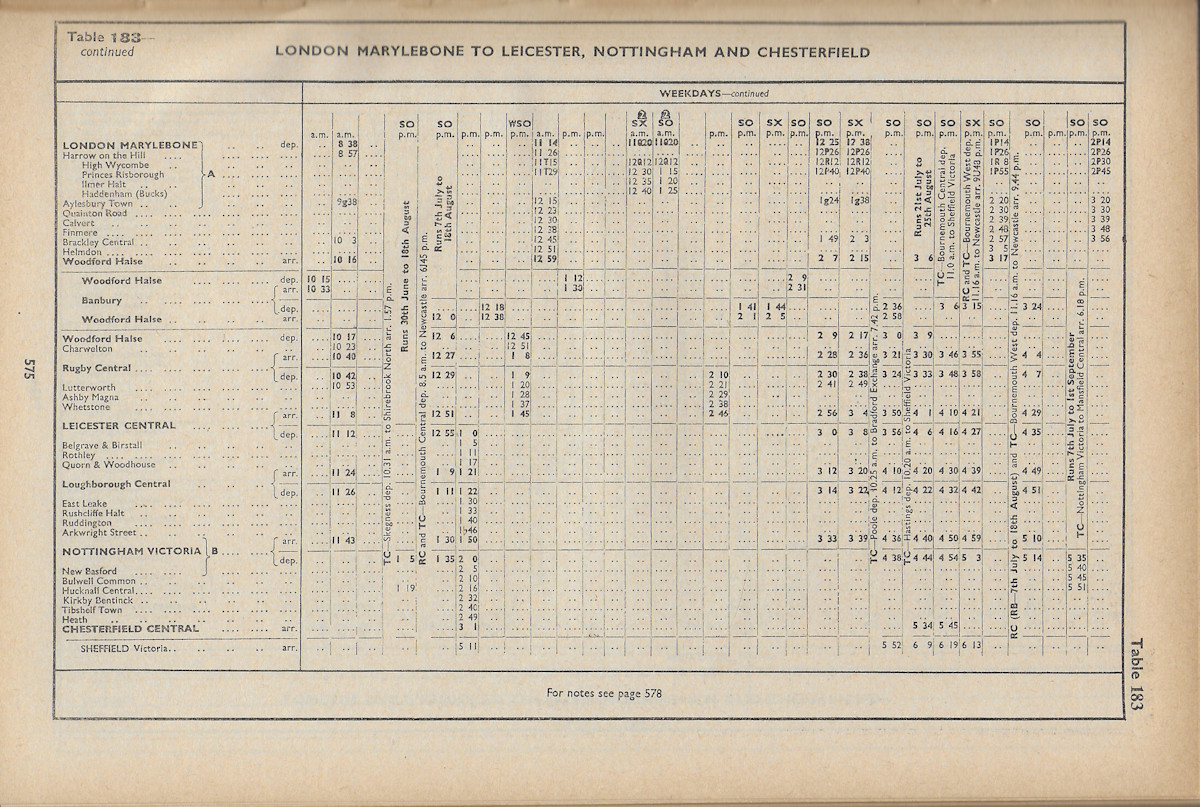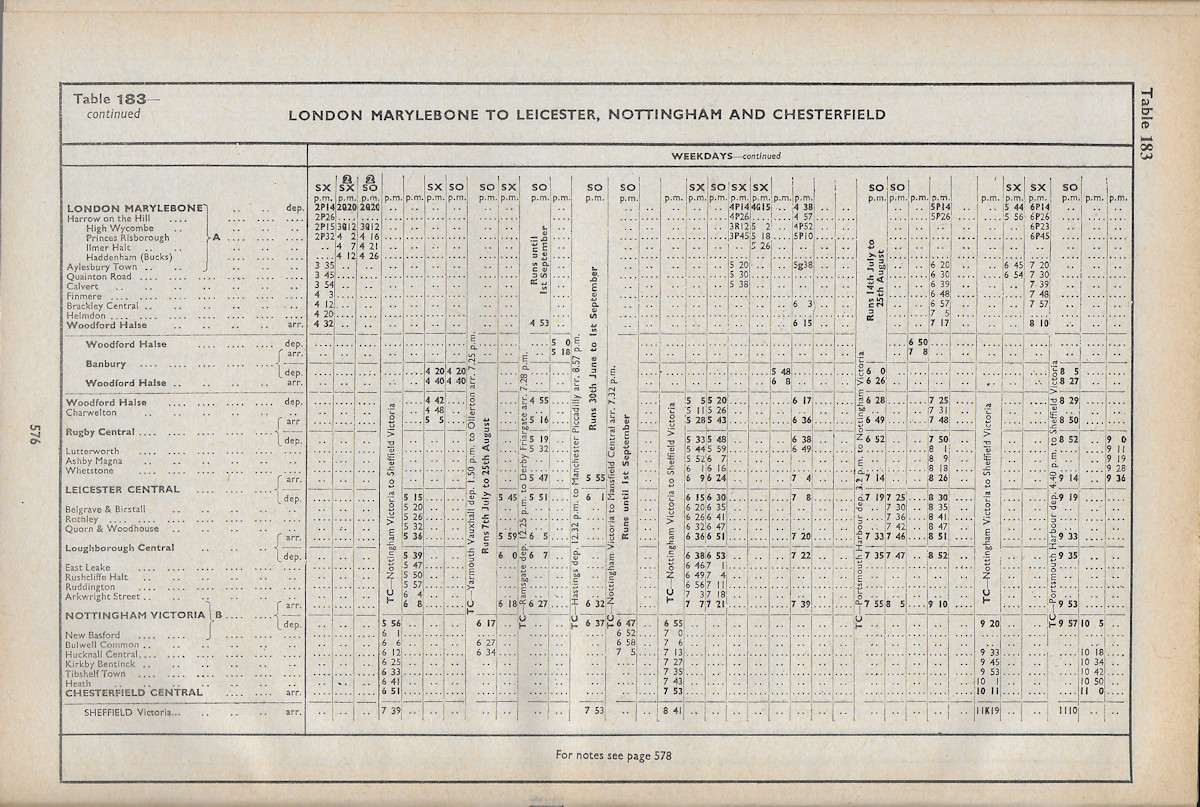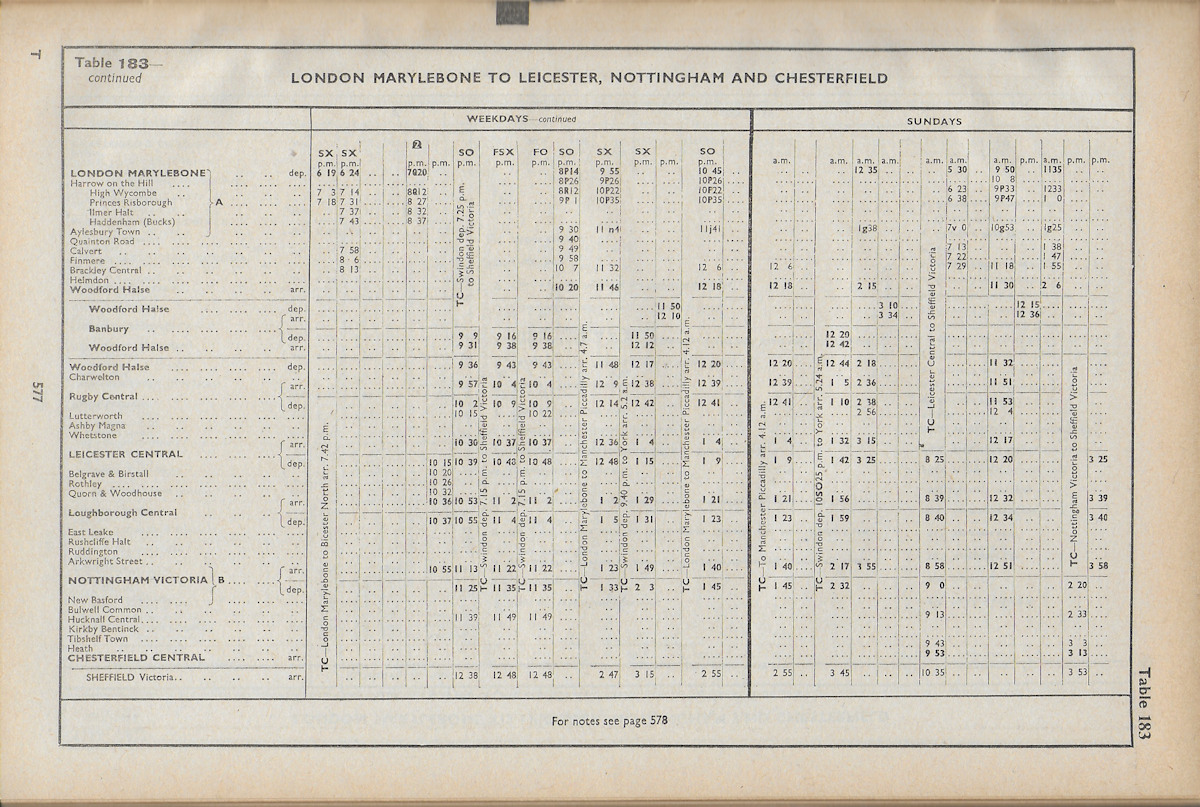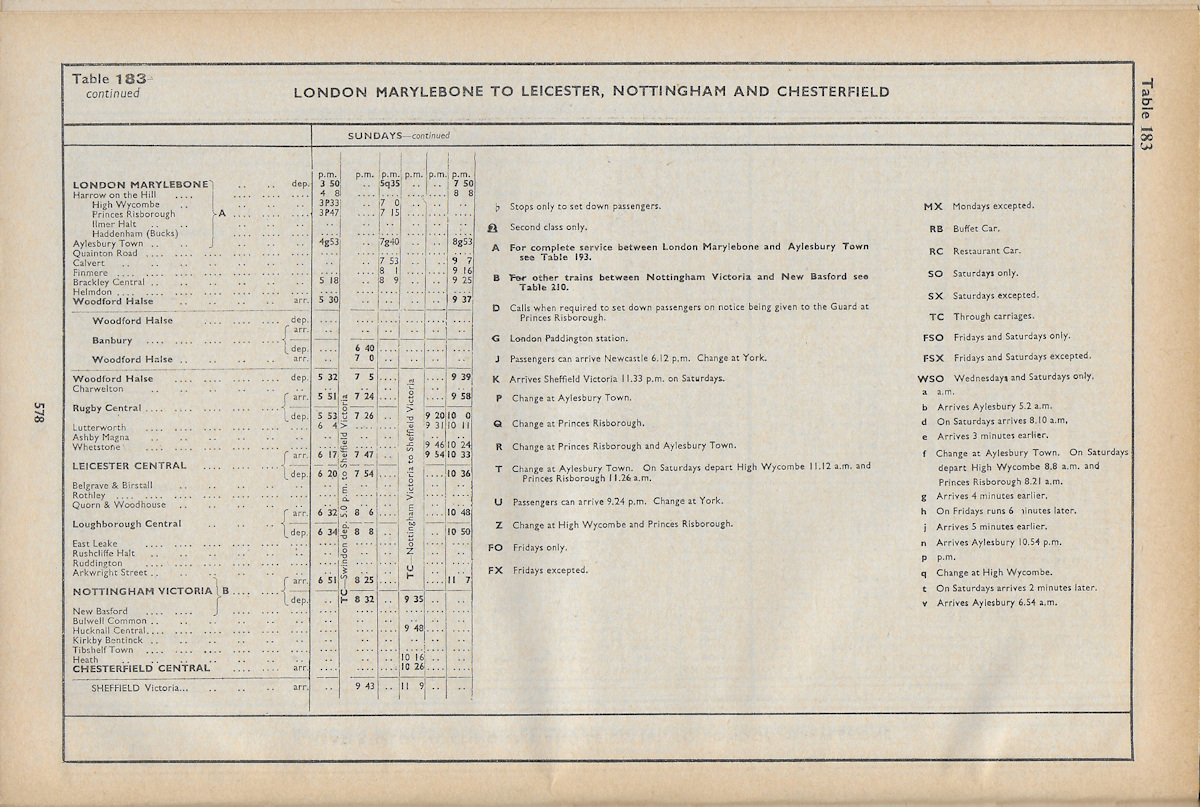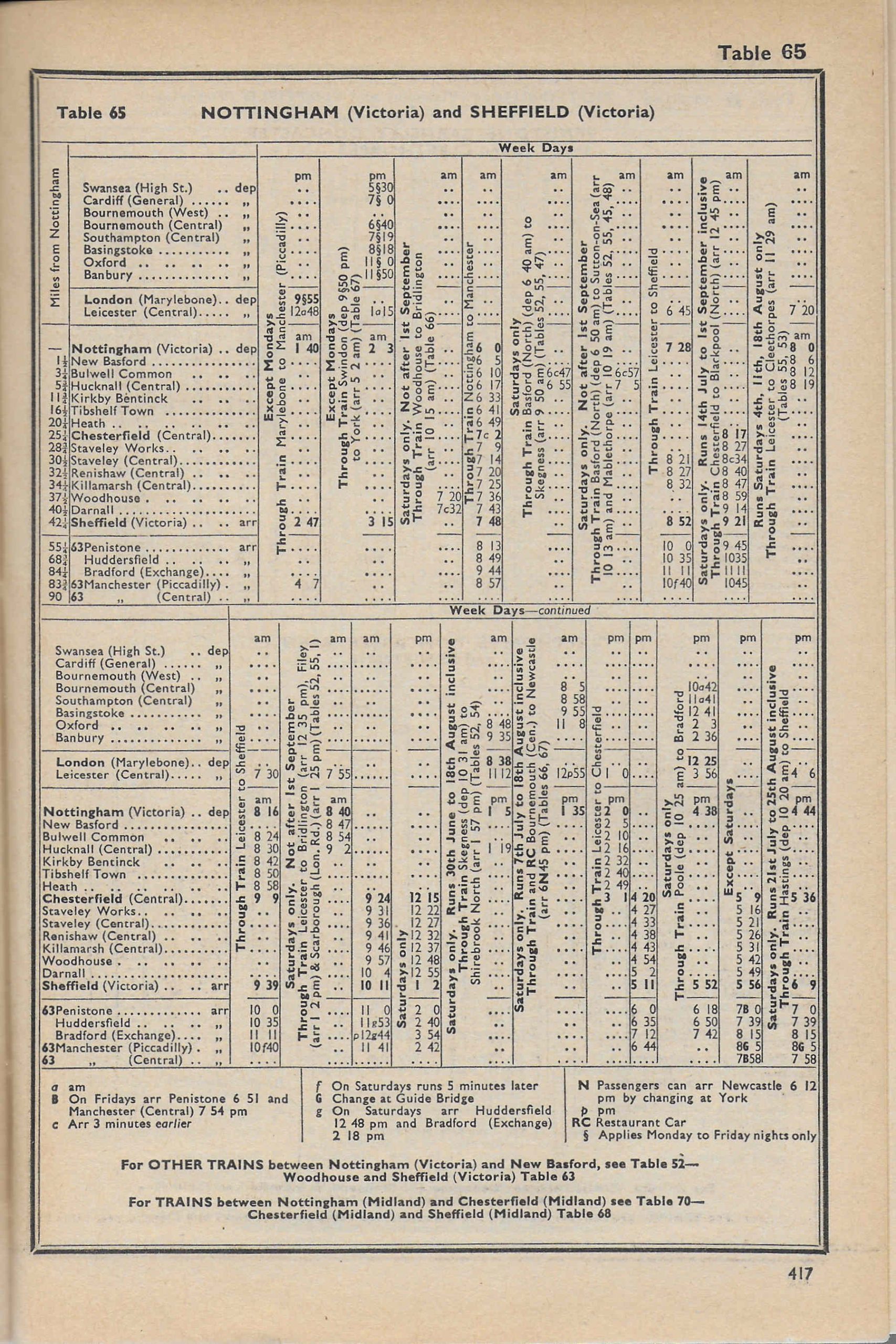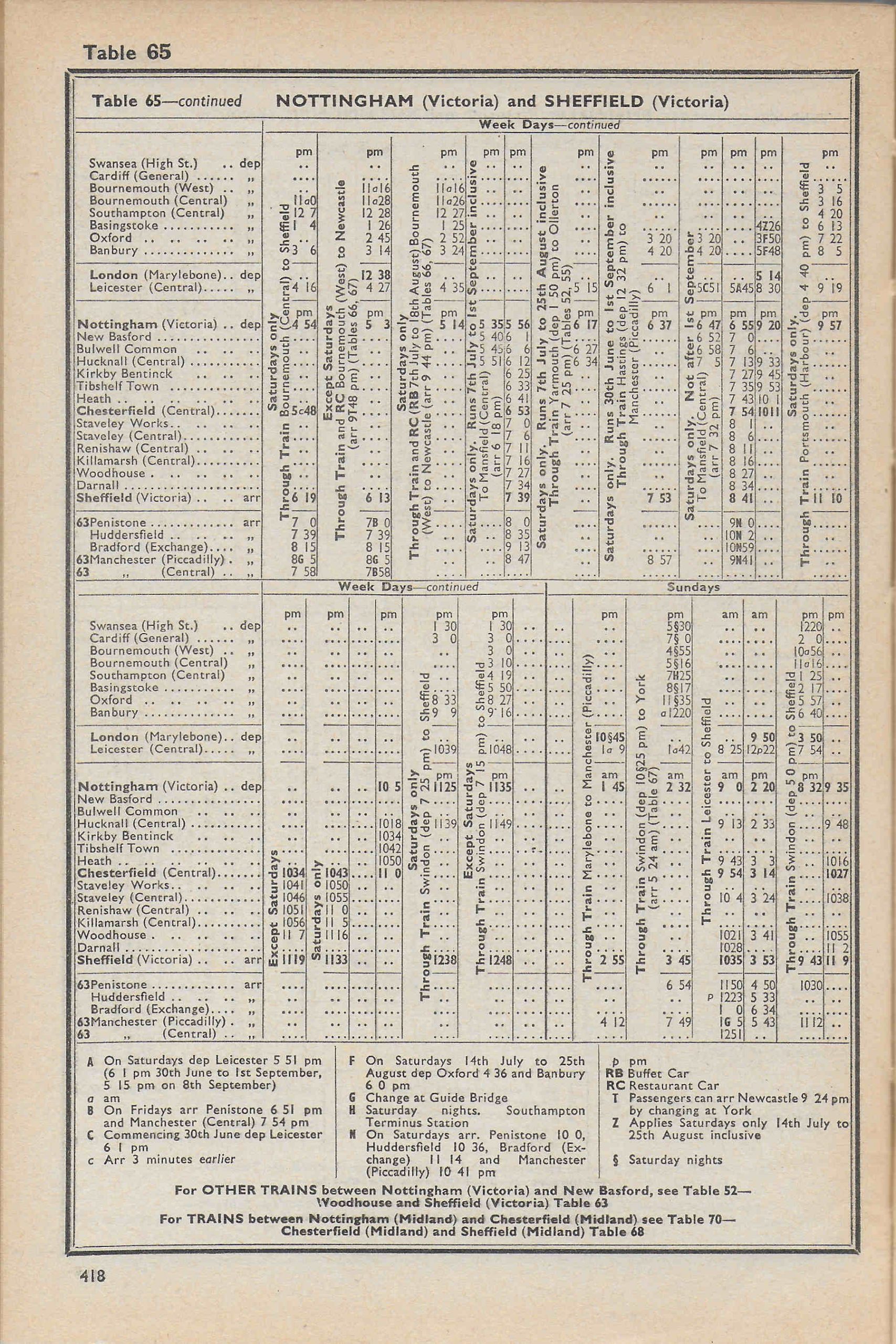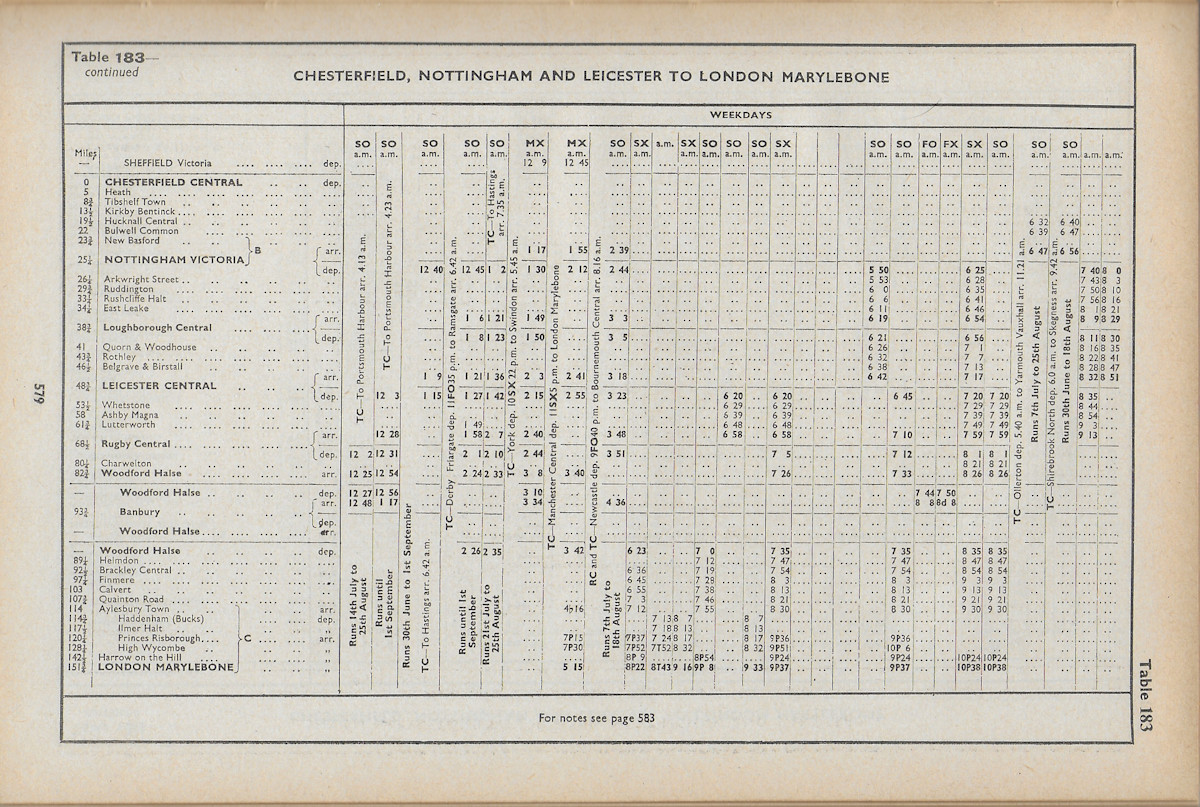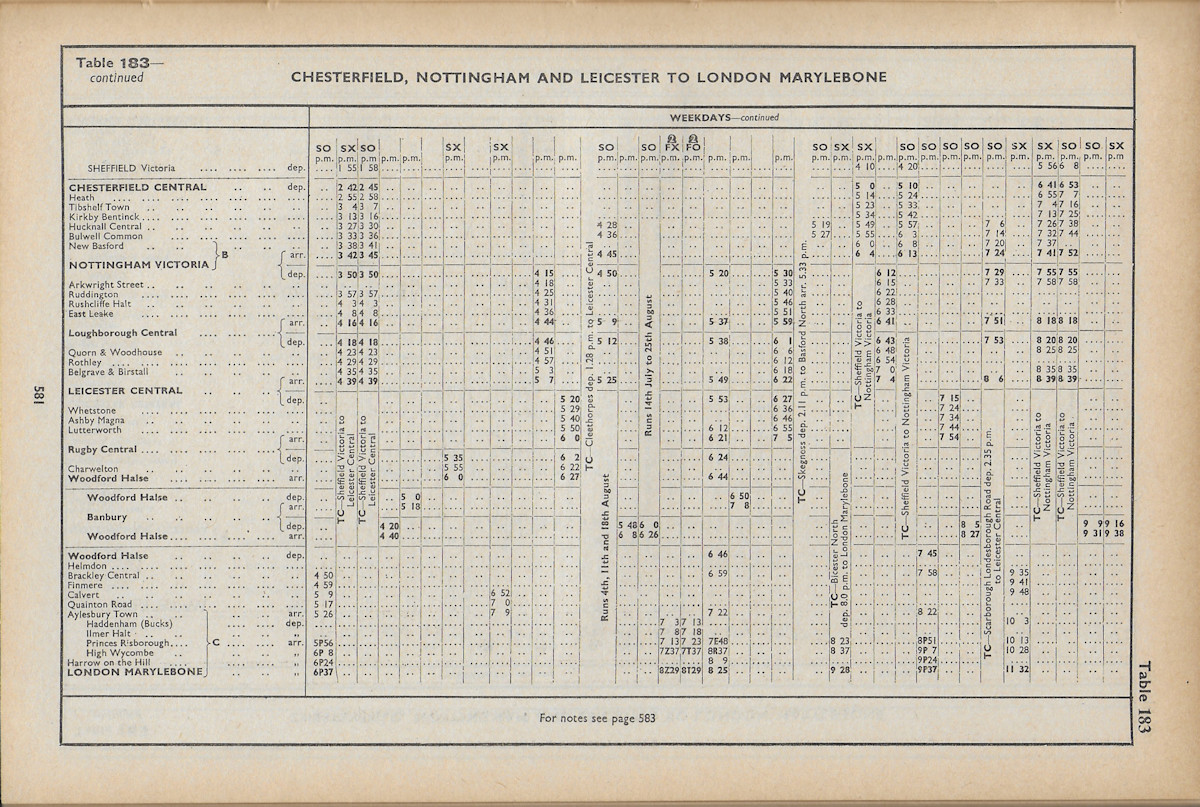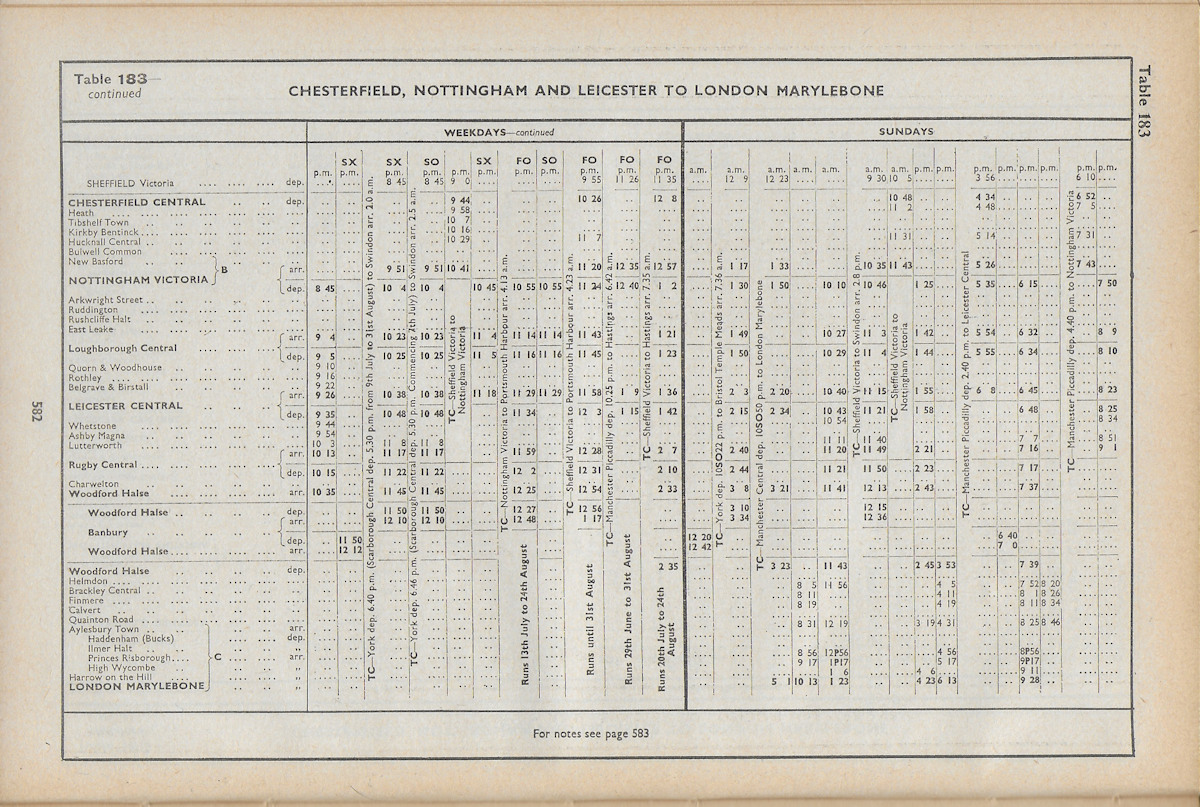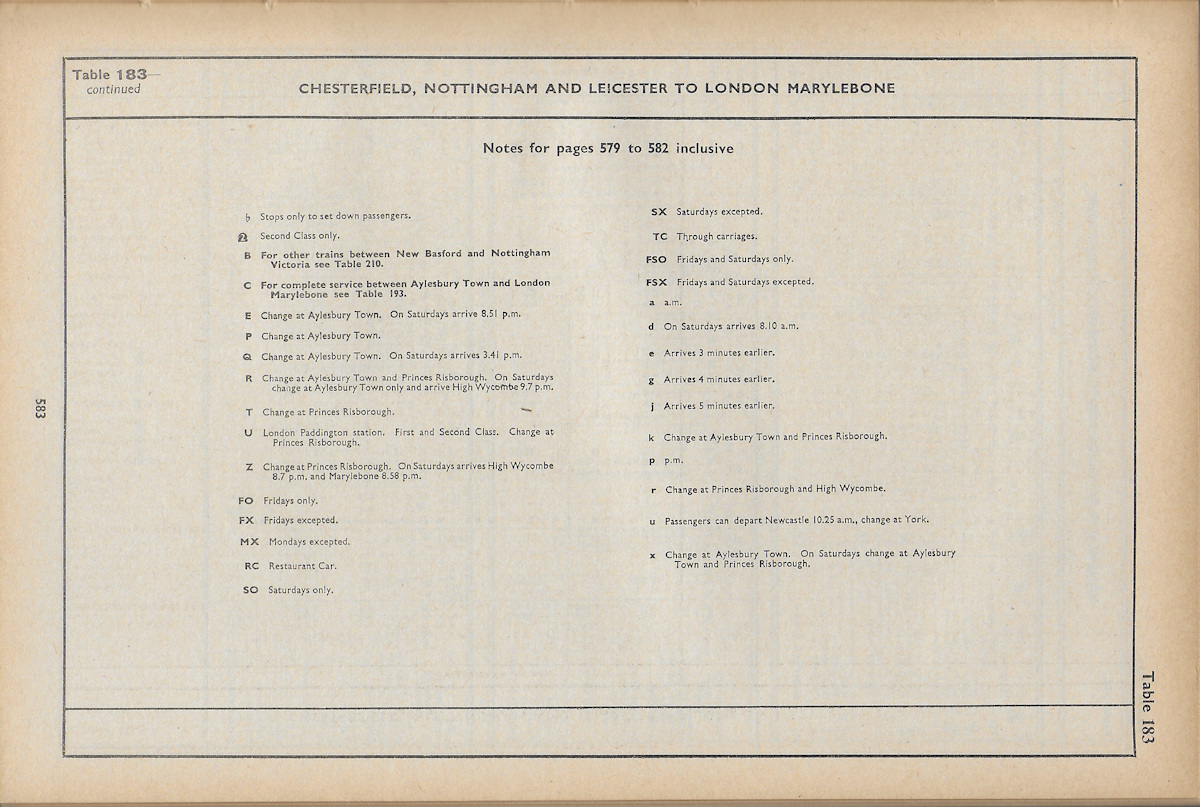August 1962 at Woodford Halse
This page contains links to the Train Register at Woodford Halse No.2 Signal Box covering the period from Tuesday 31st July 1962 to Saturday 1st September 1962 and to the corresponding Passenger and Freight Working Timetables for Summer 1962. These documents give a unique insight into operations on the Great Central Main Line at a time when the through Marylebone-Manchester expresses had finished, but there was still a high level of traffic, including the famous Annesley-Woodford 'Runners', the Fish traffic, the Car Sleepers and the 'Starlight Specials'. The Working Timetables provide 'ground truth' on what was booked to run, and a comparison of these with the Train Register illustrates the actual running of the line.
The pages of the Train Register are divided into five sections:
- Tuesday 31st July1962 to Saturday 4th August 1962
- Sunday 5th August 1962 to Saturday 11th August 1962
- Sunday 12th August 1962 to Saturday 18th August 1962
- Sunday 19th August 1962 to Saturday 25th August 1962
- Sunday 26th August 1962 to Saturday 1st September 1962
Within each section, the pages are shown in two columns covering the Up and Down lines.
Please note that there are gaps in the coverage of the Train Register. Known gaps at present are:
UP LINE Saturday 18th August 4.55am to 7.53pm
DOWN LINE Friday 17th August 9.22pm to Saturday 18th August 11.46am
The Passenger and Freight Working Timetables are shown as PDF documents and are intended to be viewed in 'Two Page View' view once the documents have been opened (Two Page View is accessed via the three vertical dots in the top right-hand corner and should then be followed by 'Fit to Page' at the top centre).
The Train Register was kindly provided by RCTS Cambridge Branch member Mr Richard Tremaine and digitised by Mr Gerard Fletcher. The Working Timetables were kindly provided by Mr Malcolm Rush.
Woodford Halse No. 2 Signal Box Diagram
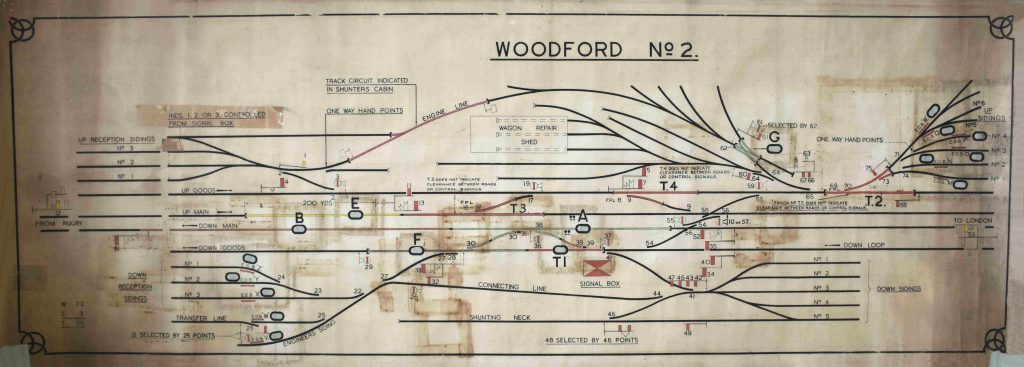
Diagram from Woodford Halse No.2 Signal Box in its latter years of operation (the Box closed on 19th September 1966). In the centre are the Up and Down main Lines to London and Rugby and on either side of these the Up and Down Goods Lines. At top right are the Old Up Sidings and at Bottom Right are the Old Down Sidings whilst at top Left are the New Up Sidings and at Bottom Left the New Down Sidings. In the Train Register these yards can be identified as OUS, ODS, NUS and NDS respectively. The Engine Shed was served by the lines at the top of the diagram fanning out from the No. 62 points. Photo: Alan Jones.
Interpretation of the Train Register
The train register is a very detailed document, written for internal readership only. As such it assumes a high level of knowledge of railway operation and great familiarity with signalling practice. To aid with its interpretation, some notes are offered below.
The 12-hour clock is used in the Train Register. To determine whether a time is morning or afternoon, move forward or backwards in the pages of the register until midnight, at which time the new date is written across the page.
Several acronyms are used, including:
OUS = Old Up Sidings ODS = Old Down Sidings
NUS = New Up Sidings NDS = New Down Sidings
M = Main Line L = Loop (or Goods) lines
EDB = Electric Detection Bar
In addition to these acronyms:
- ‘Loco’ refers to Woodford Halse Shed (2F) and is used in the context of engines going on and coming off the shed.
- ‘Trans’ stands for ‘Transfer’ and refers to movements between the yards at Woodford (which were signalled as 3 beats).
- 'Motor' is the 'Banbury Motor', the local working between Woodford Halse and Banbury General.
Locomotive numbers are often written on the pages of the register. BR Standard Class 9F locomotives in the number series 92XXX are frequently written without the ‘9’ and appear as 2XXX.
Since Woodford Halse was a busy main line junction with two diverging routes, the London Midland Region’s Routing Bell Codes were used for Up trains. Standard bell codes were used for Up trains on the main line; A1 and A2 bell codes were used for trains to the Western Region (WR) via the Culworth Junction to Banbury Junction line (not for trains to the Western Region via Northolt Junction and Greenford) and B1 and B2 bell codes were used for trains for the Stratford-on-Avon and Midland Junction (SMJ) line via the curve from Woodford No.4 Box to Woodford West Junction. It should be noted that a local code of 2-3-3 was used for light engines going on shed.
These codes are shown in the table below.
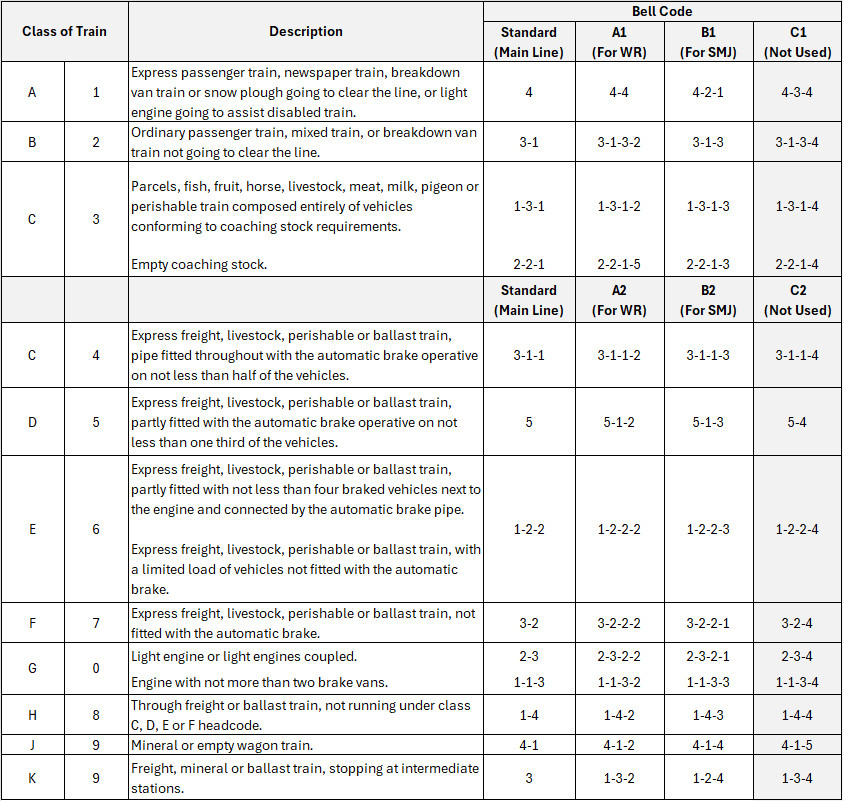
Traffic Summary: Bank Holiday Weekend - Friday 3rd/Saturday 4th August 1962, Up Line
A summary of traffic on the Up Line over the night of Friday 3rd August/ Saturday 4th August 1962 is given in the graphic below. Much of the typical traffic of the time can be seen, including the three Fish trains and their return empties, locomotives coming on and off shed, Runners to Annesley, the procession of overnight holiday trains to the Southern Region, several non-timetabled additional passenger trains on the Up Main and two Starlight Specials.
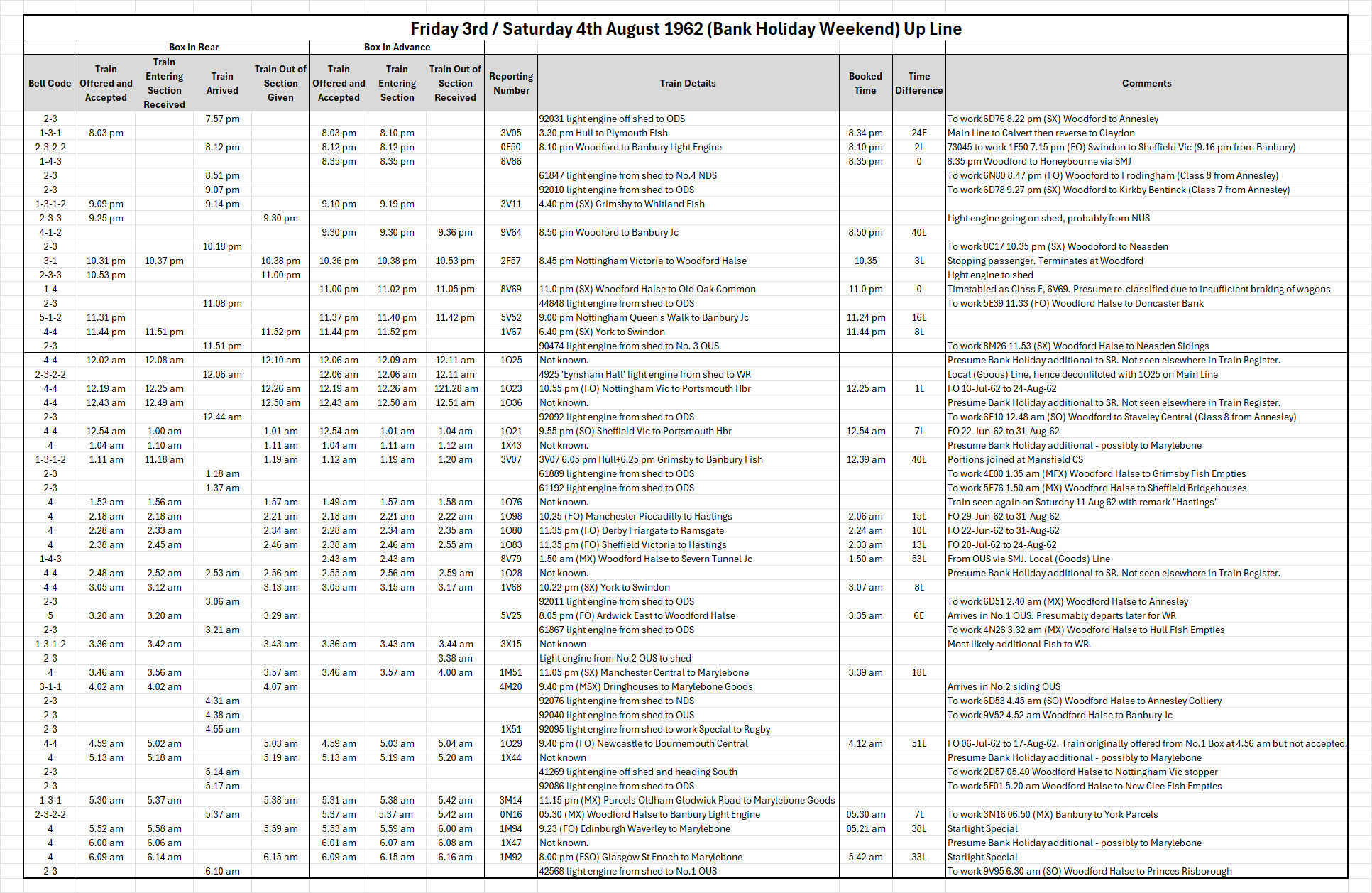
On occasions, freight trains were signalled with bell codes corresponding to a different class of train from that given in the timetable or as noted in the ‘Remarks’ column of the Train Register. This occurred when the braking arrangements of the train on that day did not match the requirements of the class of train shown in the timetable.
For example, on the Up Line on August 1st 1962, 4V21 (5.10 am York Dringhouses to Cardiff, shown on the fifth of the Up Line pages of Week 1 as "12.1 Cardiff") was given Train Entering Section at 11.59 am with a 3-2-2-1 bell code. This is a B2 code for a Class 7 train, showing that it will travel via Woodford West Junction onto the SMJ. Although timetabled as a Class 4 (see the third column from the end in the upper part of the SMJ timetable below), on that particular day, the train would have comprised less than the required 50% of vehicles with the automatic brake for a Class 4, and the train has been reclassified for this journey as a Class 7 and belled accordingly. The following day, August 2nd 1962, it was back to a Class 4 and belled as a 3-1-1-3 (see eighth page).
BR WR Working Timetable Section H 18th June-9th September 1962 - SMJ Down Line
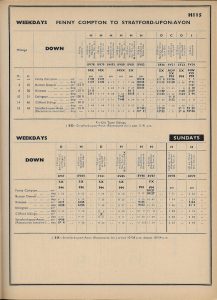
Shunting Forward and Blocking Back
The train register contains excellent examples of Shunting Forward and Blocking Back, and how these bell codes were used to control the Banbury Motor as it ran round and shunted from Down to Up platforms.
The Train Register for the Down Line on Thursday August 16th 1962 (below Left) shows the Banbury Motor being accepted by No.2 Box as a 3-3-2 (Shunting into Forward Section) from No. 3 Box at 12.43. Being the Box in Advance on the Down Line, under Rule 31 on acceptance of this signal, No.2 Box would have placed the Down Line block indicator to ‘Train on Line’.
The number 8 in brackets is the eight-consecutive-beat 'Shunt Withdrawn' signal which is followed at 12.55 by 'Train Out of Section' from No.3 Box, indicating that the shunt has completed and the obstruction on the line has been cleared. No. 2 Box can then reset its Down Line block indicator to 'Normal' or 'Line Blocked' and Down Line traffic can resume.
Also at 12.55, the Up Line Train Register (below Right) shows No.2 Box receiving a 2-4 'Blocking Back Inside Home Signal' from No. 3 Box, indicating that the Banbury Motor is now on the Up Line but is within the quarter mile clearing distance of No. 3 Box's Home signal. Being the Box in Advance on the Up Line, No.3 Box will place its Up Line block indicator to 'Train on Line', thereby preventing No.2 Box from accepting any further Up traffic until the clearing distance is clear. This occurs at 1.12 pm, when the Motor is due to depart for Banbury (see Public Timetable below). The Up Line block indicator can be set back to 'Normal' or 'Line Blocked' and Up Line traffic can resume.
Woodford Halse Train Register - Down Line - 16th August 1962
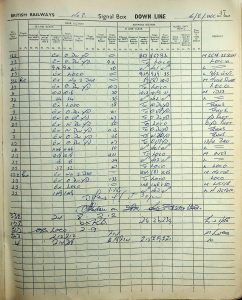
Woodford Halse Train Register - Up Line - 16th August 1962
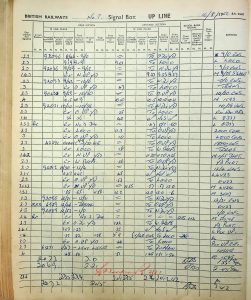
British Railways London Midland Region & Eastern Region
Passenger Timetables 18th June 1962 to 9th September 1962
Great Central Main Line
Down Line - London Midland Region
London Marylebone to Chesterfield Central
BR LMR Passenger Timetable 18th June-9th September 1962 - Table 183 London Marylebone to Chesterfield Central
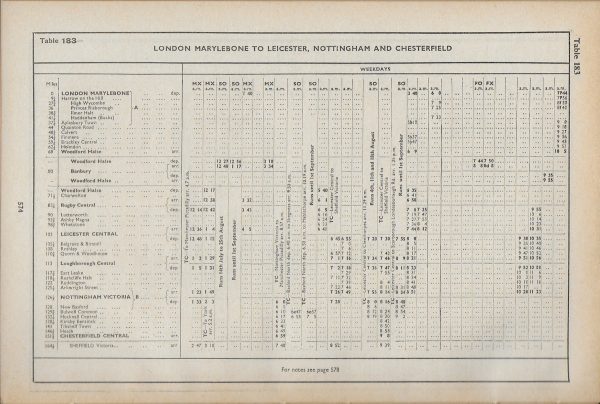
BR LMR Passenger Timetable 18th June-9th September 1962 - Table 183 London Marylebone to Chesterfield Central
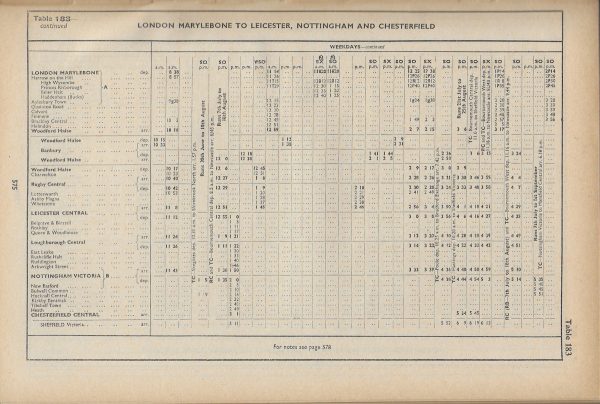
BR LMR Passenger Timetable 18th June-9th September 1962 - Table 183 London Marylebone to Chesterfield Central
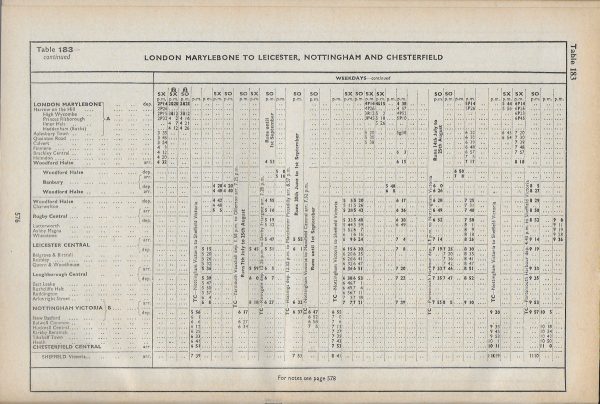
BR LMR Passenger Timetable 18th June-9th September 1962 - Table 183 London Marylebone to Chesterfield Central
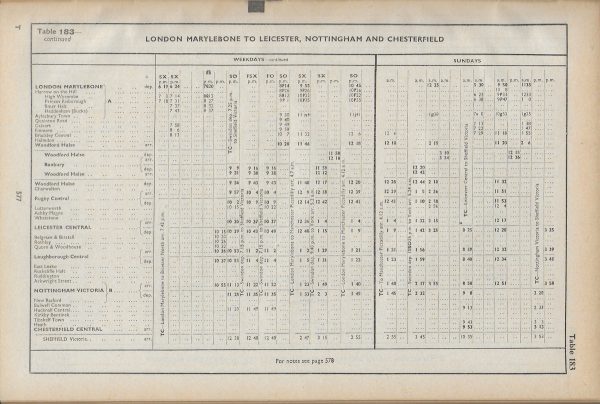
BR LMR Passenger Timetable 18th June-9th September 1962 - Table 183 London Marylebone to Chesterfield Central
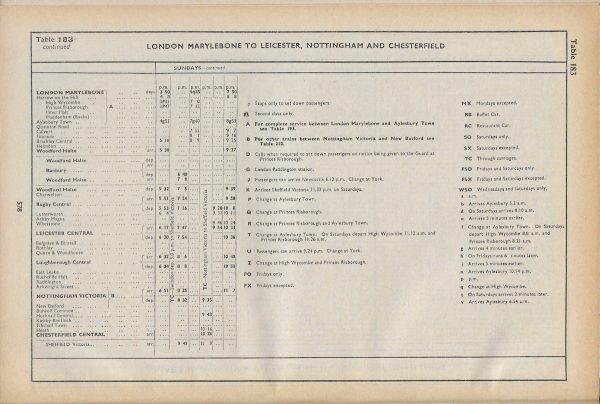
Down Line - Eastern Region
Nottingham Victoria to Sheffield Victoria
BR ER Passenger Timetable 18th June-9th September 1962 - Table 65 Nottingham Victoria to Sheffield Victoria
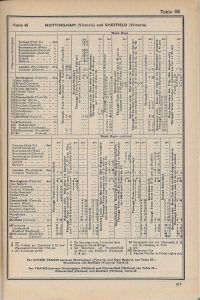
BR ER Passenger Timetable 18th June-9th September 1962 - Table 65 Nottingham Victoria to Sheffield Victoria
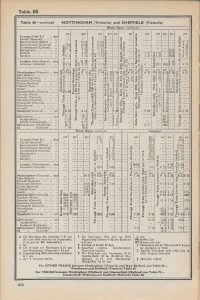
Up Line - London Midland Region
Chesterfield Central to London Marylebone
BR LMR Passenger Timetable 18th June-9th September 1962 - Table 183 Chesterfield Central to London Marylebone
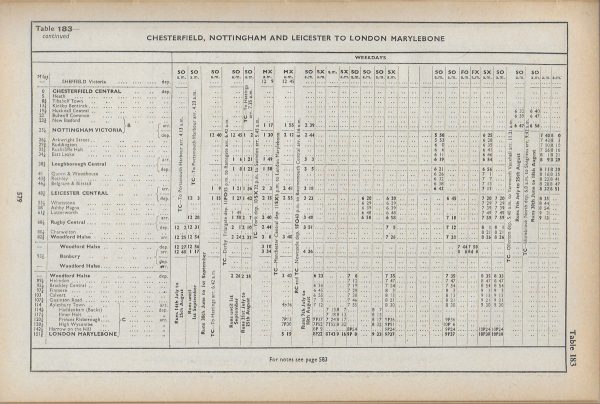
BR LMR Passenger Timetable 18th June-9th September 1962 - Table 183 Chesterfield Central to London Marylebone
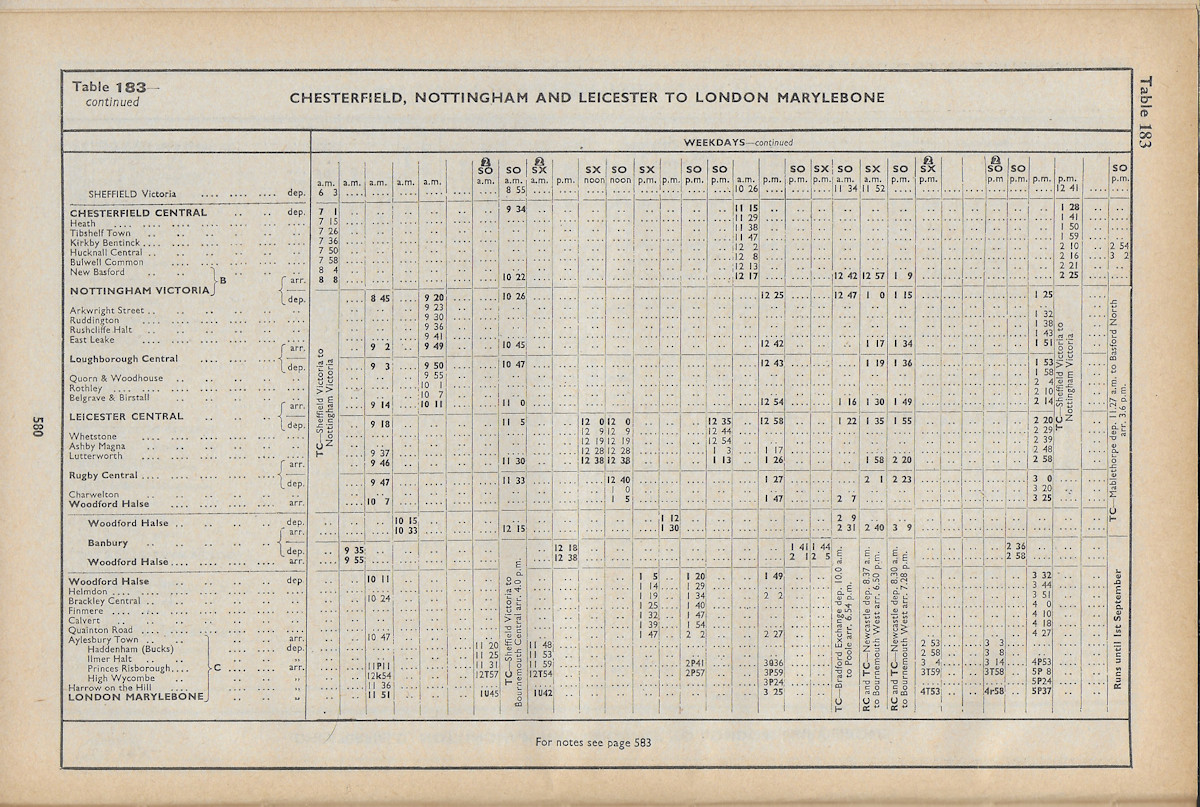
BR LMR Passenger Timetable 18th June-9th September 1962 - Table 183 Chesterfield Central to London Marylebone
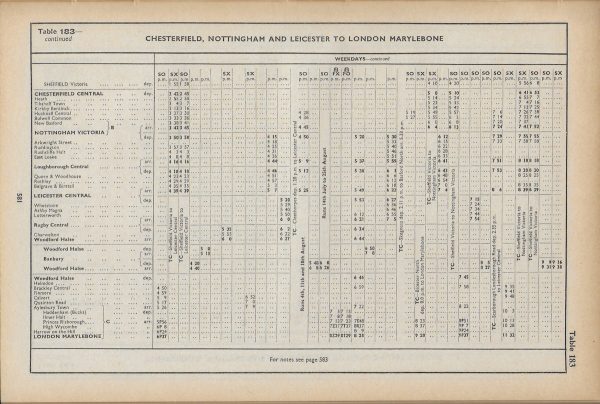
BR LMR Passenger Timetable 18th June-9th September 1962 - Table 183 Chesterfield Central to London Marylebone
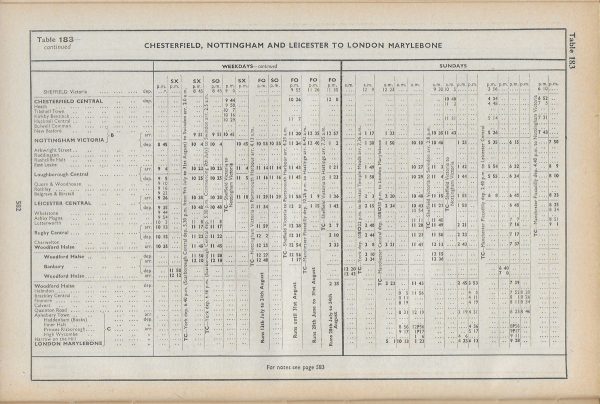
BR LMR Passenger Timetable 18th June-9th September 1962 - Table 183 Chesterfield Central to London Marylebone
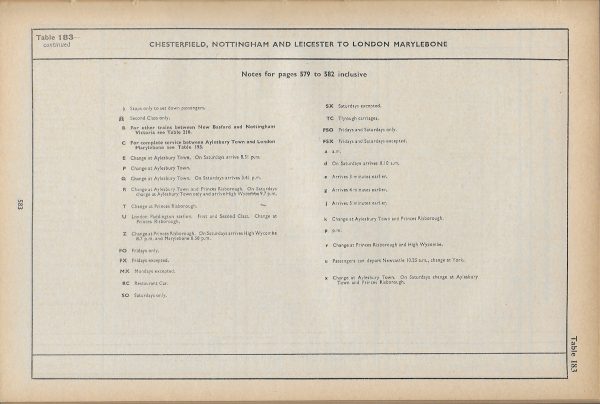
Up Line - Eastern Region
Sheffield Victoria to Nottingham Victoria
BR ER Passenger Timetable 18th June-9th September 1962 - Table 65 Sheffield Victoria to Nottingham Victoria
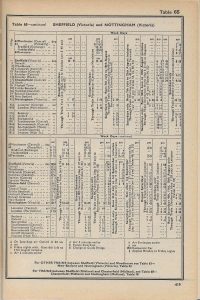
BR ER Passenger Timetable 18th June-9th September 1962 - Table 65 Sheffield Victoria to Nottingham Victoria
